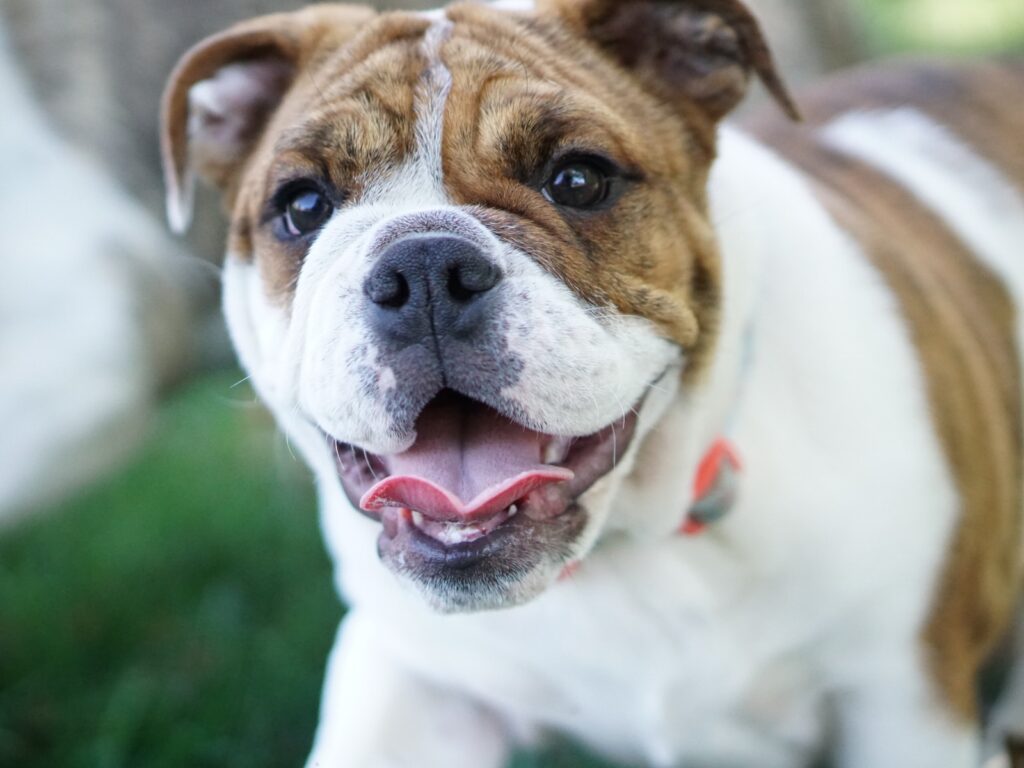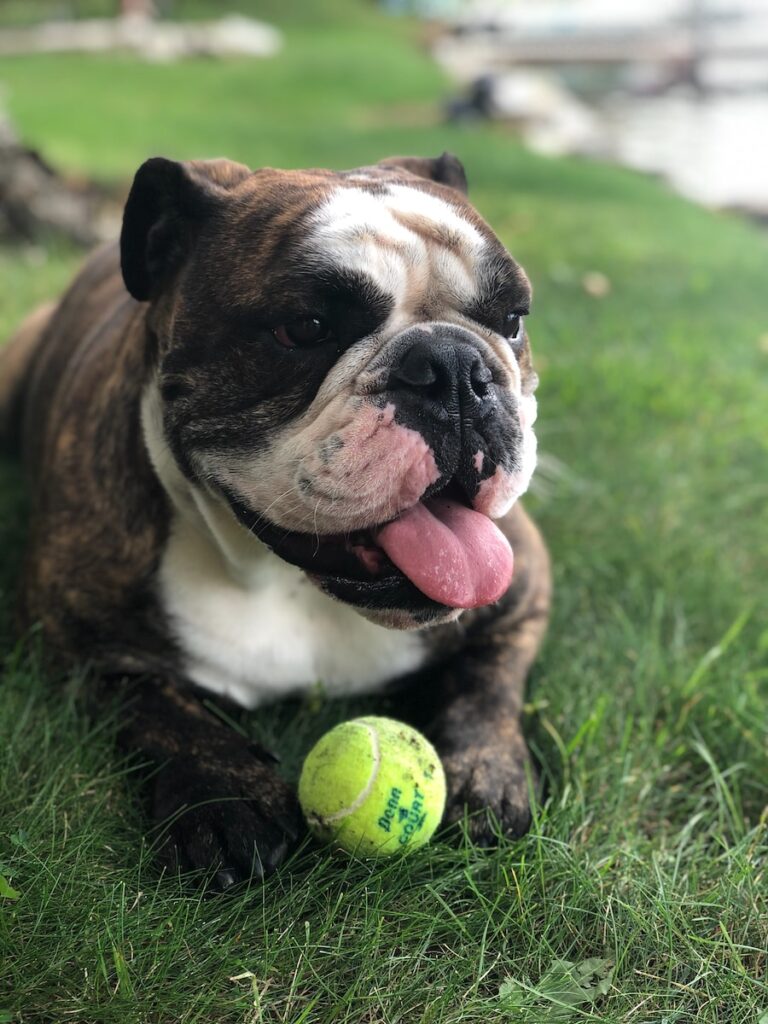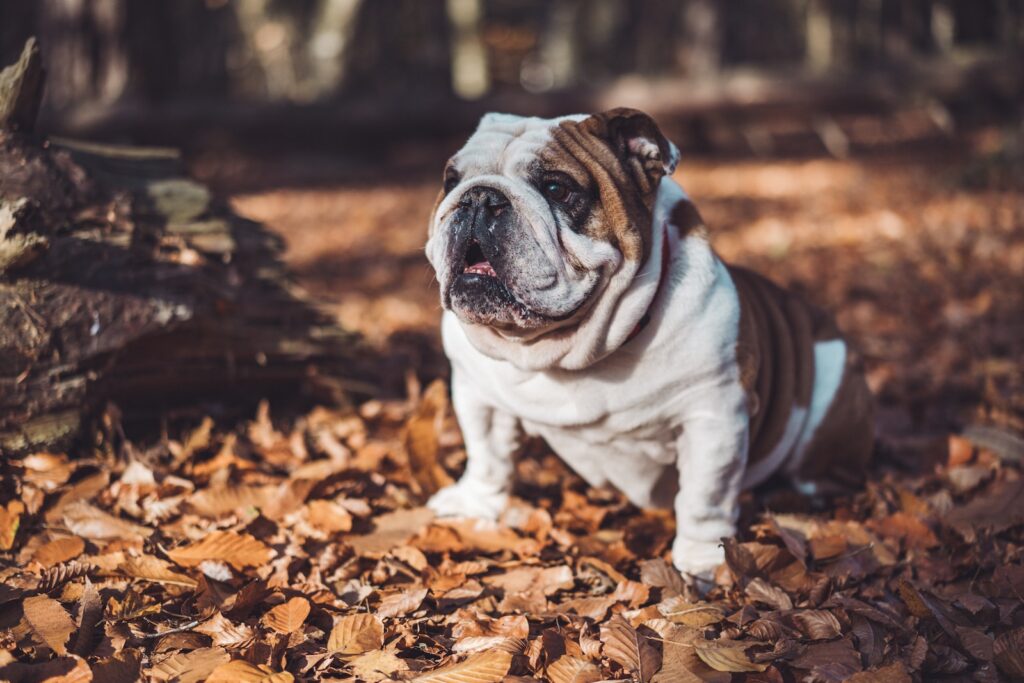Bulldogs are known for their steadfast demeanor and their endearing wrinkled appearance. These lovable companions require some special considerations when it comes to exercise, training, and grooming. To provide valuable insights, we’ve put together this guide on training your bulldog 101. Let’s explore Bulldog care and training through different stages of their life.
The Bulldog Blueprint: Get to Know Your Pal
Before you embark on this fun journey, get to know your Bulldog’s unique personality. These lovable, wrinkled goofballs may look tough, but they’re real softies at heart. Each Bulldog has its quirks and charms, so pay attention to what makes your furry friend wag its tail in delight. Is it treats, toys, belly rubs, or all of the above? Understanding your Bulldog’s motivations is the key to successful training.
By the way – If you’re embarking on a mission to make your pup the ultimate doggo sensation, you simply must explore Adrienne Farricelli’s dog training program. Let me tell you, she’s one of the sweetest souls in the world of dog training. And her classes? Well, they’re like having your very own personal dog whisperer right at your beck and call. Adrienne’s approach is incredibly accessible (pun not intended), and she’ll lead you through the process to have your furry friend trained like a pro. So, if you’re searching for the ultimate, deep-dive guide to canine training success, don’t overlook what Adrienne’s got in store. Your pup will shower you with a million tail wags! 🐶❤️

Growth Stage: Between 8-16 Weeks
Training Goal #1: Socialize Bulldogs with other dogs
Bulldogs are social creatures, known for their love of human and canine companionship. Socializing your Bulldog is crucial. Ensure these interactions with new dogs and people are positive and enjoyable. Louise Daigle emphasizes that “proper socialization involves quality interactions.” You’ll want your Bulldog to interact with other dogs that behave appropriately. The AKC S.T.A.R. Puppy program can help teach your pup manners and socialize them with other dogs.
Training Goal #2: Get Bulldogs used to grooming
Those wrinkles are cute, but they can trap bacteria and yeast if not cleaned regularly. Brenda Fontanos recommends getting puppies accustomed to grooming from a young age. Gently wipe their wrinkles daily with paper towels or soft tissues to keep them dry and to help the pup get used to being handled.
To make grooming a fun experience, Louise Daigle suggests creating a game. Smear some peanut butter or canned pumpkin on a lick mat, chew toy, or the refrigerator. Once your pup is interested in the treat, start handling them and cleaning their wrinkles. Begin with simple petting and brushing before moving on to cleaning their faces and paws.
Training Goal #3: Show Bulldogs what to chew
Bulldogs love to chew, especially when they’re teething. Offer your Bulldog sturdy rubber toys for chewing. When they grab something they shouldn’t, like a shoe, distract them and quickly replace it with an acceptable chew item. Praise your Bulldog when they chew on the right items to reinforce the behavior positively.

Potty Training: No More Bulldog Bullseyes!
Potty training can be a wild ride with Bulldogs. Their love for food might make them more interested in treats than answering nature’s call. Keep a close eye on your pup, and when it’s time to go, use a simple command like “Potty Time!” and reward them with a treat when they do their business. With consistency and a splash of patience, you’ll conquer this training task in no time.
Puppy Stage: By 6 Months
By this age, your Bulldog puppy should be well-socialized and ready to continue basic obedience lessons.
Training Goal #4: Teach basic commands to your Bulldog
Begin training your puppy with basic commands like “Sit,” “Stay,” and “Leave-It.” Then progress to commands like “Drop-It.” Bulldogs have strong grips, so it’s crucial to teach the “Drop It” command without simply taking items from your dog. Always offer a trade, such as a treat, for the item in their possession, preventing resource guarding.
Training Goal #5: Potty train your Bulldog
To prevent accidents, it’s essential to potty train your Bulldog. Brenda Fontanos suggests taking your pup outside regularly and crate training them at night. Crating helps prevent mischief, chewing, and accidents.
Training Goal #6: Exercise your Bulldog in cool temperatures
Bulldogs are brachycephalic, making it challenging for them to breathe on hot, humid days. Brenda Fontanos recommends exercising your Bulldog early in the morning or late in the evening to avoid extreme heat. Always provide water and consider using cooling jackets on warm days.
You can also create an indoor playroom for your pup to keep them active and safe during hot weather.

Basic Obedience: Sit, Stay, and Roll Over!
Teaching your Bulldog basic commands is not only fun but also essential for a well-behaved pup. Start with “Sit” and “Stay.” Bulldogs are known for their endearing stubbornness, so be patient and use treats to encourage them. Remember, their charming grin makes it hard to resist their puppy-dog eyes!
“Roll Over” is an entertaining trick that can be challenging due to their stocky build. But with practice and lots of treats, your Bulldog can become the life of the canine party. Get ready for those priceless moments when your Bulldog rolls over like a pro!

Growth Stage: By One Year
By the time your Bulldog reaches one year of age, they should have mastered basic obedience and have a consistent daily routine.
Training Goal #7: Get your Bulldog involved in AKC activities
Bulldogs are smart and can participate in activities like obedience classes, tracking, and agility. The AKC Canine Good Citizen classes are a great way to teach them the basics. Louise Daigle suggests including training classes in your Bulldog’s exercise routine to provide mental stimulation and tire them out.
Training Goal #8: Take precautions around water with your Bulldog
Bulldogs enjoy water but are poor swimmers due to their body structure. Ensure your pup’s safety by supervising them around shallow kiddie pools and outfitting them with a life jacket near lakes or oceans.
By following these training and care goals, you’ll ensure a happy and healthy life for your beloved Bulldog.

Socializing Bulldogs: The More, the Merrier!
Bulldogs are social butterflies with a love for cuddles. Socializing your Bulldog from a young age is crucial. Encourage playdates with other dogs and introduce them to various people, environments, and situations. The more they experience, the more well-rounded and confident they’ll become.
Stay Positive and Keep It Fun!
Throughout your Bulldog training journey, remember to keep things upbeat and full of fun. They thrive on praise, positive reinforcement, and treats. When you see those stubby tails wagging with joy, you’ll know you’re on the right track.
Bulldog Facts
Origin and Name: Bulldogs are a British breed of dog known for their mastiff-type characteristics. They are also referred to as English Bulldogs or British Bulldogs.
Appearance: These medium-sized dogs typically weigh around 40–55 pounds (18–25 kilograms). Bulldogs have large heads with thick skin folds around the face and shoulders, along with a relatively flat face and a protruding lower jaw.
Health Challenges: Bulldogs suffer from several health issues due to selective breeding for their unique appearance, including brachycephalia, hip dysplasia, heat sensitivity, and skin infections. Concerns about their well-being have led to the prohibition of Bulldog breeding in some countries.
Historical Roots: The modern Bulldog evolved from the Old English Bulldog, which was originally used for bull-baiting in England. Bulldog’s role transitioned to that of a companion dog when bull-baiting was banned under the Cruelty to Animals Act.
Formation of Bulldog Clubs: The Bulldog Club in England was established in 1878, followed by the formation of the Bulldog Club of America in 1890. These clubs aimed to standardize the breed and promote responsible breeding.

Bulldog Facts (cont.)
Kennel Club Recognition: The Kennel Club, founded in 1873, played a pivotal role in registering purebred dogs, including Bulldogs. The breed entered into the Kennel Club Stud Book in 1874.
Longevity: Bulldogs have relatively short lifespans. They typically start showing signs of aging around five to six years old, with a median age of death at 6 years 3 months. However, those that live to old age can reach 10 to 11 years.
Health Concerns: Bulldogs are prone to various health issues, including cardiac problems, cancer, and brachycephalic airway obstructive syndrome (BAOS) due to their short snout and other morphological characteristics.
Behavior: Despite historical associations with ferocity, modern Bulldogs are generally friendly, patient, and known for forming strong bonds with children and other pets. They are excellent family pets.
Exercise and Care: Bulldogs require daily exercise, but their health issues, such as breathing difficulties and hip dysplasia, can make this challenging. Adequate exercise is essential to prevent weight gain and related health problems.
Common Disorders: Bulldogs are prone to conditions like hip dysplasia, patellar luxation, interdigital cysts, cherry eye, allergies, and skin-fold dermatitis due to their characteristic wrinkles. Over 80% of Bulldog litters are delivered via Caesarean section due to the breed’s large heads.
In the world of Bulldog training, patience and positivity are your best pals. The journey with your wrinkled companion might have a few twists and turns, but the destination is a loyal, loving, and well-behaved furry friend. So, gear up, put on your best training smile, and embark on a bulldozer-sized adventure with your beloved Bulldog. Happy training and tail wags to you both!


